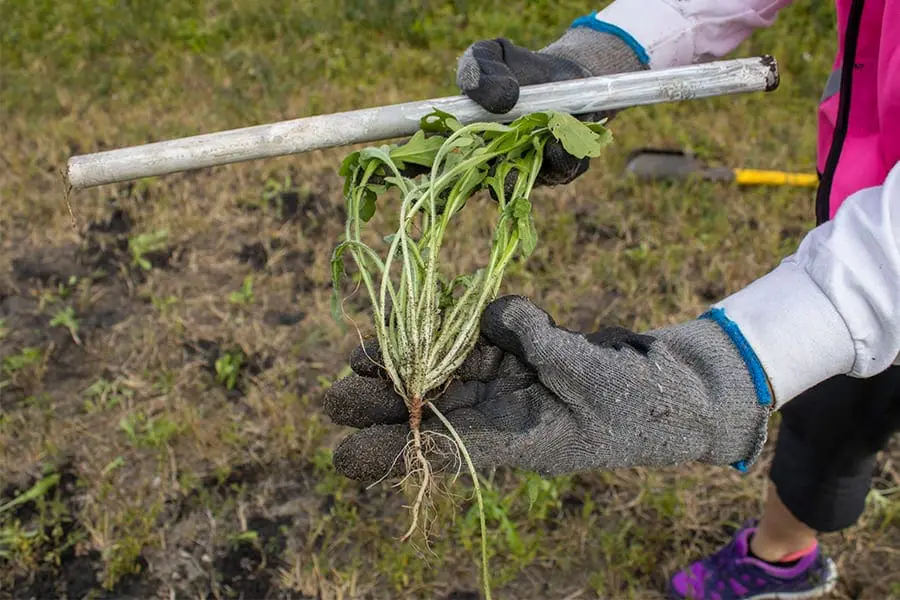

Two WOWWW members carefully plant wildflowers in an area off of I-95 Exit 191.
One of our many conservation initiatives is Women of the Wild (WOW), a club focused on collective environmental change in our community by brainstorming sustainable solutions and supporting other women in their efforts. WOW has now empowered a group of its members to plant native wildflowers up and down Brevard County.
A few years ago, WOW’s coordinator introduced the club to the Florida Department of Transportation (FDOT) Wildflower Program. This initiative (which began back in 1963) aims to preserve native wildflowers along the more than 12,000 miles of road FDOT maintains in order to expand biological diversity, enhance roadside aesthetics, lower landscaping costs and increase habitat for pollinators. Planting wildflowers also helps improve driver safety as taller vegetation reduces glare at night and slows errant cars in the “clear zone.” A reduced reliance on mowing and trimming improves safety for both motorists and would-be landscapers, too.
At the time, WOW members were more focused on supporting pollinators by making “seed bombs” and bee houses, and participating in citizen-science initiatives. A partnership with FDOT was revisited in 2019, and the Women of the Wild Wildflower Women (WOWWW) initiative was born!
This group currently has nine members who have teamed up to map sites, manage mowing schedules, plant seeds, install marking posts and more—all on their own dime. Species they have planted include blanket flower, black-eyed Susan and crimson clover. WOW is the first organization in Brevard County to work on a wildflower project with FDOT.

One of the species planted, the blanket flower, will eventually grow to be around two feet tall.
WOWWW has chosen seven locations throughout Brevard County to manage. Although COVID-19 thwarted their plans to begin sooner, members have already planted at three sites and hope to prepare and plant the remaining sites in the near future.
Once planting is complete, the group will monitor the sites regularly for two to three months, after which they will periodically check on each location—wearing reflective vests for safety—and pulling weeds as necessary.
“WOW’s strength is connecting environmentally minded women to resources and each other,” explained Ashley Rearden, the Zoo’s conservation curator. “We inspire and empower each other to act on our passions, which ultimately benefits our community and planet as a whole.”
If you’re interested in helping pollinators and the habitats they depend on, you can introduce native plants to your garden, install and maintain bee houses around your property, limit your pesticide use or join WOW yourself to take part in the fun!